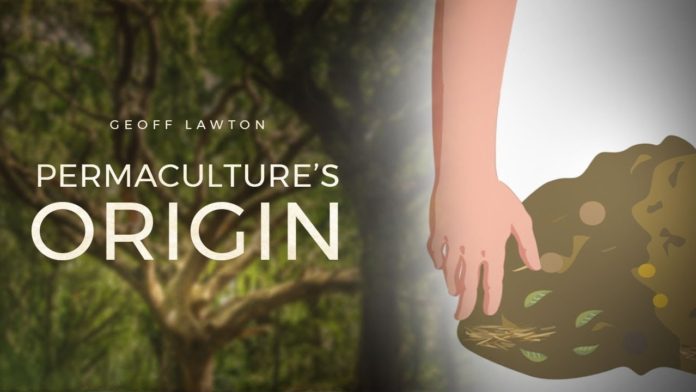Geoff’s Permaculture Design Course — PDC 2.0 is now LIVE. To register, head here:
https://www.discoverpermaculture.com/a/12453/e3i2ci3L
Soil rehabilitation is a major subject in the Permaculture Design Certificate (PDC) course. Here’s a sample animation from the course covering the 18-Day Berkeley method of composting. Blackboard sections of the course are followed by animations like this one to go deeper into the specifics of the topics being covered.
Video Overview:
The tools necessary include a pitchfork, a hard rake, and a water-proof cover. The materials to be composted are things that have lived before, assembled in a carbon to nitrogen ratio of ideally 25-30 parts carbon to one part nitrogen. Anything with a carbon-to-nitrogen ratio of 30-50 to one is high carbon and slow to break down. These items should be shredded to increase surface area. Anything less than 30:1 doesn’t need to be shredded and will break down quickly.
Piles should be composed of one-third shredded high carbon material, one-third powdered manure, and one-third finely cut green material, with a total of one cubic meter at a minimum. It should be pitchforked together one material at a time while being watered. An activator, one to two liters in size, can be placed in the middle of the heap, and this can include chopped up comfrey, fish, an animal body, urine, and/or good compost. It should be covered and left for four days, at which time the pile will just be warming.
Then, it should be turned and covered with the moisture level such that, when squeezed very firmly, it will just drip. It can then be turned every other day, with days six to eight being the hottest. At this time, it should be uncomfortable to hold a hand inside it. 55-60 degrees Celsius is the ideal temperature. When cooler on the outside, it means its too dry, or when hotter on the outside, it is too wet. From day eight, it will begin to cool, and at day 18, it should be warm, dark brown, and the same size, and it should have an earthy smell and fine particles.
If the compost doesn’t get hot, first check if it is big enough: one-cubic meter, 1.5 meters high. If it is big enough, the moisture level should be checked next. If this is okay, it might be that the carbon material isn’t cut up finely enough. If all is well with these things, add more nitrogen and allow for two more days. If it heats up too quickly, loses volume, smells bad, and has white threads and powder through it, then the nitrogen content is too high, so carbon material should be added, along with two more days.
Support us in making more films by:
► Signing up to our newsletter and the Permaculture Circle—my curated collection of 100+ free videos: https://start.geofflawtononline.com/permaculturecircle/
► Liking us on Facebook: https://www.facebook.com/geofflawtononline/
► Following us on Instagram: https://www.instagram.com/geofflawtononline/
► Subscribing to our channel: https://www.youtube.com/channel/UCL_r1ELEvAuN0peKUxI0Umw/?sub_confirmation=1
About Geoff:
Geoff is a world-renowned permaculture consultant, designer and teacher. He has established permaculture demonstration sites that function as education centres in all the world’s major climates — information on the success of these systems is networked through the Permaculture Research Institute and the www.permaculturenews.org website.
About Permaculture:
Permaculture (https://en.wikipedia.org/wiki/Permaculture) integrates land, resources, people and the environment through mutually beneficial synergies – imitating the no waste, closed loop systems seen in diverse natural systems. Permaculture applies holistic solutions that are applicable in rural and urban contexts and at any scale. It is a multidisciplinary toolbox including agriculture, water harvesting and hydrology, energy, natural building, forestry, waste management, animal systems, aquaculture, appropriate technology, economics and community development.
#compost #sustainable #permaculture
Source




